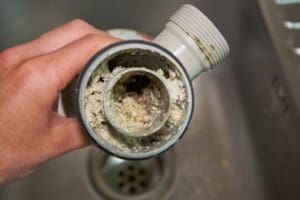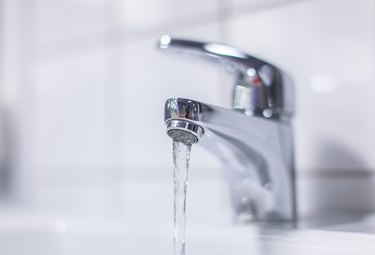Trusted Tactics for Solving Low Water Pressure in Your Home
Trusted Tactics for Solving Low Water Pressure in Your Home
Blog Article
They are making a number of great pointers relating to 9 Reasons for Low Water Pressure in Your House overall in the content following next.

Low tide stress in your home can be an aggravating issue, impacting everything from showering to cleaning meals. If you're experiencing weak water flow, there are a number of possible reasons and services to check out. In this guide, we'll go over usual factors for low water pressure and useful actions to attend to the problem successfully.
Intro to Low Water Stress
Low water pressure happens when the circulation of water from your taps, showers, and other components is weak than typical. This can make day-to-day tasks a lot more tough and much less efficient. Comprehending the sources of low tide pressure is critical to finding the right solution.
Typical Causes of Low Tide Pressure
Pipeline Obstructions
Over time, pipelines can come to be blocked with mineral deposits, sediment, or particles, limiting the circulation of water. This is a common issue in older homes with galvanized steel pipelines.
Rust
Corrosion within pipelines can lead to leaks and decreased water stress. Rust buildup can constrict water flow, specifically in aging plumbing systems.
Faulty Pressure Regulators
Pressure regulatory authorities are in charge of maintaining regular water stress in your house. If they malfunction, it can cause low tide pressure or irregular circulation throughout the house.
Community Water System Issues
Occasionally, the trouble lies outside your home. Local water system issues, such as main line leaks or maintenance job, can briefly reduce water pressure in your location.
Just How to Detect Low Water Pressure
Inspecting Faucets and Components
Beginning by checking the water stress at different faucets and fixtures throughout your home. If the concern is isolated to details locations, it may suggest localized issues.
Inspecting Pipelines
Check visible pipes for indications of leaks, deterioration, or obstructions. Take notice of any type of uncommon sounds, such as knocking or rattling pipelines, which might show problems within the plumbing system.
Consulting with a Plumber
If you're not able to identify the source of low tide pressure, think about working with an expert plumber to conduct an extensive examination. They can recognize underlying problems and recommend proper remedies.
DIY Solutions to Fix Low Tide Stress
Cleansing Aerators and Showerheads
Mineral deposits can gather in aerators and showerheads, decreasing water circulation. Remove and clean these components frequently to enhance water stress.
Flushing Water Heater
Sediment build-up in the hot water heater can limit circulation and lower performance. Flushing the storage tank regularly assists get rid of sediment and maintain optimal performance.
Inspecting Stress Regulator
Ensure that the stress regulatory authority is operating properly. Adjusting or changing the regulatory authority can assist bring back proper water pressure throughout your home.
Clearing Clogs in Water Lines
For small obstructions, try utilizing a plumbing snake or chemical drainpipe cleaner to clear blockages in pipes. Beware when making use of chemicals and follow safety standards.
When to Call a Professional Plumber
If do it yourself efforts fail to resolve the concern or if you believe considerable plumbing problems, it's finest to look for assistance from a certified plumber. They have the competence and devices to attend to intricate issues securely and effectively.
Safety Nets to Maintain Water Stress
Normal Upkeep
Set up routine maintenance for your plumbing system to prevent issues such as rust, leakages, and blockages. Attending to minor problems early can help stay clear of even more considerable fixings later.
Mounting a Stress Booster
Consider installing a pressure booster pump to boost water stress in areas with regularly low circulation. This can be particularly useful for multi-story homes or buildings with high-demand components.
Surveillance Water Usage
Be mindful of water usage practices and stay clear of overtaxing the plumbing system. Basic adjustments, such as staggering showers and washing loads, can aid preserve adequate water pressure.
Conclusion
Managing low tide pressure can be frustrating, but identifying the underlying reasons and executing suitable services can restore ideal flow throughout your home. Whether it's cleaning aerators, inspecting pipelines, or speaking with a plumber, taking aggressive steps can make certain a consistent supply of water for your daily demands.
HOW TO FIX LOW WATER PRESSURE IN YOUR HOUSE (EXPERT GUIDE)
The morning shower lacking any real pressure? Bathtub taking hours to fill? Or maybe you’re dissatisfied with the inadequate performance from your combi boiler?
Then you, like millions of others across the UK, might be experiencing low water pressure.
Fortunately, the good news is that you don’t have to continue living this way. The cause of low water pressure in the home is often quite simple, and you may not even require a plumber to fix the problem.
What causes low water pressure in the house?
If you are experiencing issues with water pressure throughout your home, then you may have one of the problems outlined below.
Most of these problems can be fixed quite easily, but for others, you may need to contact a plumber.
Obstructed Shutoff Valve
If you’ve just bought a new home or recently had building work conducted on your property, there is a chance that your water valves were not fully opened.
If the water valve is partially closed, then you may be restricting the amount of water entering your home. To fix this, simply ensure the valve is fully open.
If the valve appears fully open but you are still encountering reduced water pressure, then the valve may be broken. If this is the case, do not under any circumstances try to fix it without proper training.
Often found under your kitchen sink, a water valve will usually look like a bright yellow handle.
Again, if you believe the water valve is broken, contact a plumber immediately.
Leaks in Your Water Pipes
Leaks are the worst-case scenario when it comes to low water pressure.
If the water pipes are damaged, then this will cause low water pressure, as not all the water will make it to your taps.
After you’ve checked to see if the valve is fully open, you can conduct a leak check of your home. Now, this may seem scary, but it is actually quite simple.
Clogged Water Pipes
Clogged water pipes are one of the most common causes of low water pressure.
These clogs usually build-up when your home is supplied water via iron pipes. Iron is particularly vulnerable to rusting which can then break off and cause an obstruction within your system. You also face the problem of things like dirt, gravel or sand entering creating mineral deposits which further block water flowing from the mains water supply.
Unfortunately, if you suspect that clogged pipes may be restricting your water supply, then you will need to contact a plumber.
In this situation, you will either need to have your pipes removed and cleaned or in more severe cases, you could require a new set of water pipes.
Designer Taps
Designer taps look fantastic, but are they built to be efficient in your plumbing system? Modern taps are built for modern homes and they often have lower flow rates that are specifically designed for use within high-pressure systems.
Install a Water Pressure Booster Pump
If the issue is simply that the mains water pressure supply is too low, the simplest fix is to invest in a booster pump. Found in homes of all shapes and sizes, booster pumps are a relatively cheap option to add extra pressure to your home.
Designed to increase water pressure by passing water into the pump from your mains supply and then ejecting it into your home water system at a higher pressure, a booster pump is a truly simple and effective solution to increasing water pressure.
https://www.anchorpumps.com/blog/the-plumbers-guide-to-fixing-low-water-pressure/

HOW TO FIX LOW WATER PRESSURE IN YOUR HOUSE (EXPERT GUIDE)
The morning shower lacking any real pressure? Bathtub taking hours to fill? Or maybe you’re dissatisfied with the inadequate performance from your combi boiler?
Then you, like millions of others across the UK, might be experiencing low water pressure.
Fortunately, the good news is that you don’t have to continue living this way. The cause of low water pressure in the home is often quite simple, and you may not even require a plumber to fix the problem.
What causes low water pressure in the house?
If you are experiencing issues with water pressure throughout your home, then you may have one of the problems outlined below.
Most of these problems can be fixed quite easily, but for others, you may need to contact a plumber.
Obstructed Shutoff Valve
If you’ve just bought a new home or recently had building work conducted on your property, there is a chance that your water valves were not fully opened.
If the water valve is partially closed, then you may be restricting the amount of water entering your home. To fix this, simply ensure the valve is fully open.
If the valve appears fully open but you are still encountering reduced water pressure, then the valve may be broken. If this is the case, do not under any circumstances try to fix it without proper training.
Often found under your kitchen sink, a water valve will usually look like a bright yellow handle.
Again, if you believe the water valve is broken, contact a plumber immediately.
Leaks in Your Water Pipes
Leaks are the worst-case scenario when it comes to low water pressure.
If the water pipes are damaged, then this will cause low water pressure, as not all the water will make it to your taps.
After you’ve checked to see if the valve is fully open, you can conduct a leak check of your home. Now, this may seem scary, but it is actually quite simple.
Clogged Water Pipes
Clogged water pipes are one of the most common causes of low water pressure.
These clogs usually build-up when your home is supplied water via iron pipes. Iron is particularly vulnerable to rusting which can then break off and cause an obstruction within your system. You also face the problem of things like dirt, gravel or sand entering creating mineral deposits which further block water flowing from the mains water supply.
Unfortunately, if you suspect that clogged pipes may be restricting your water supply, then you will need to contact a plumber.
In this situation, you will either need to have your pipes removed and cleaned or in more severe cases, you could require a new set of water pipes.
Designer Taps
Designer taps look fantastic, but are they built to be efficient in your plumbing system? Modern taps are built for modern homes and they often have lower flow rates that are specifically designed for use within high-pressure systems.
Install a Water Pressure Booster Pump
If the issue is simply that the mains water pressure supply is too low, the simplest fix is to invest in a booster pump. Found in homes of all shapes and sizes, booster pumps are a relatively cheap option to add extra pressure to your home.
Designed to increase water pressure by passing water into the pump from your mains supply and then ejecting it into your home water system at a higher pressure, a booster pump is a truly simple and effective solution to increasing water pressure.
https://www.anchorpumps.com/blog/the-plumbers-guide-to-fixing-low-water-pressure/
Do you really like more info about Dealing with Low Water Pressure in Your Home? Try leaving a comment further down. We'd be pleased to listen to your thoughts about this write up. Hoping that you visit us again soon. Sharing is nice. Helping others is fun. Thanks so much for going through it.
Call Report this page